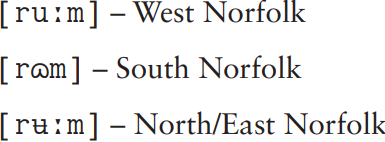


 Grammar
Grammar
 Tenses
Tenses
 Present
Present
 Past
Past
 Future
Future
 Parts Of Speech
Parts Of Speech
 Nouns
Nouns
 Verbs
Verbs
 Adverbs
Adverbs
 Adjectives
Adjectives
 Pronouns
Pronouns
 Pre Position
Pre Position
 Preposition by function
Preposition by function 
 Preposition by construction
Preposition by construction
 Conjunctions
Conjunctions
 Interjections
Interjections
 Grammar Rules
Grammar Rules
 Linguistics
Linguistics
 Semantics
Semantics
 Pragmatics
Pragmatics
 Reading Comprehension
Reading Comprehension|
Read More
Date: 2023-11-29
Date: 2023-12-15
Date: 2023-12-02
|
Koinés
Koinés are new compromise varieties which emerge from contact between speakers of different varieties. Koinéization is driven primarily by two processes:
• Levelling – the retention of forms which are used by a large number of speakers
• Simplification – the retention of forms which are morphologically simple or more regular, and therefore easier for post-adolescent learners to acquire.
Two other contact outcomes need also to be mentioned. In the first, incomplete accommodation between speakers of different dialects results in the creation of interdialect forms. In northern France, for example, contact between speakers of dialect and standard French has produced new compromise regional French forms, which were present in neither:

A similar compromise is evident in the lexical interdialect form take out, used in north-western England and the Midlands for a meal bought to be consumed off the premises. This form combines one element of the southern variant take away and one from the Scottish/north-eastern form carry out.
Finally, instead of being lost in the reduction process, variants can be reallocated to a new status. Trudgill suggests that this has happened in Norwich with three different variants of the ROOM vowel, originally associated with different parts of Norfolk:

The population of Norwich grew exponentially during the nineteenth century, drawing in migrants from the rural hinterland, and bringing all of these Norfolk variants to the urban dialect mix. None, however, won out over the others: instead they were reallocated as social status markers within the city. The west Norfolk [u:] form, which corresponds to that of RP, has the highest status of the three, followed by south Norfolk  and finally the low-status north and east Norfolk form
and finally the low-status north and east Norfolk form  .
.
|
|
|
|
علامات بسيطة في جسدك قد تنذر بمرض "قاتل"
|
|
|
|
|
|
|
أول صور ثلاثية الأبعاد للغدة الزعترية البشرية
|
|
|
|
|
|
|
مدرسة دار العلم.. صرح علميّ متميز في كربلاء لنشر علوم أهل البيت (عليهم السلام)
|
|
|